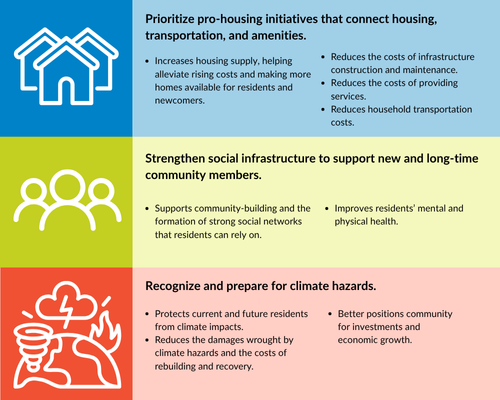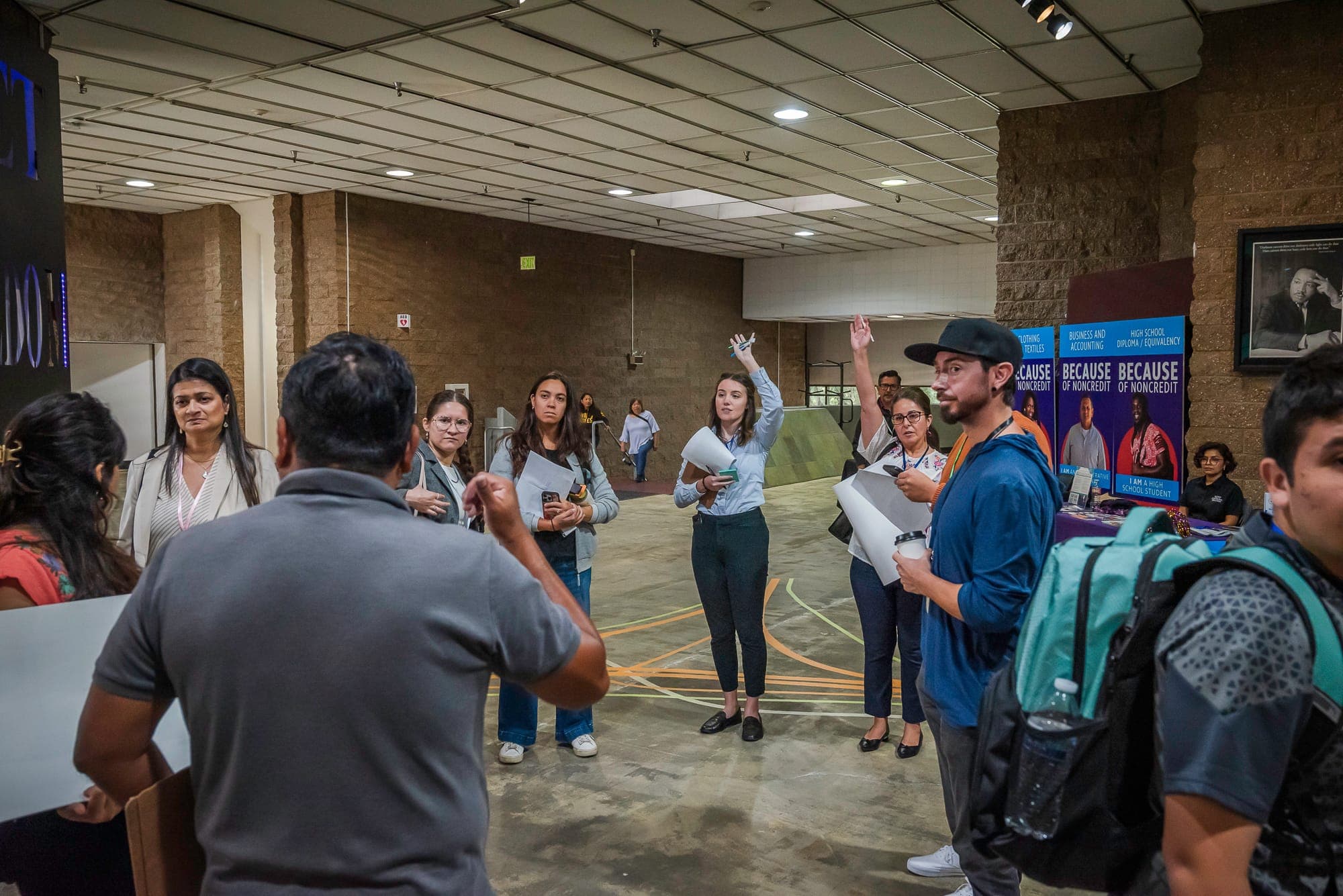
News
By Joseph Mendonca, October 20, 2025
Last month, Illinois passed SB1859, the Climate Displacement Act, one of the first pieces of legislation in the country to address the needs of climate-displaced people. As extreme weather events increasingly force Americans to relocate, it’s unlikely to be the last. Smart Growth America’s report, Housing for Havens: Smart growth strategies for climate resilience, provides a policy framework for states and other stakeholders working to ensure the built environment can accommodate those displaced by climate impacts. With the U.S. facing its greatest housing shortage in generations, communities must adopt strong pro-housing strategies that support both current residents and climate-displaced newcomers. These strategies should prioritize housing in well-connected areas with access to existing infrastructure and services—even before population shifts make the need urgent.
Illinois’ Climate Displacement Act
Passed by the Illinois legislature in May and signed into law by Governor Pritzker this past August, the Climate Displacement Act requires the state to convene a task force to chart Illinois’ approach to climate displacement. The task force will include representatives from the legislature, several state agencies, subject matter experts, and advocacy groups who will study climate displacement trends and patterns in the state. By summer 2027, it will analyze the state’s infrastructure and agency operations to identify potential needs and strategies for addressing displacement. The task force’s findings will then be submitted to the legislature to guide future policies that better support climate-displaced people.
Proactive planning like this can help Illinois, a state with relatively low risk of climate hazards like droughts, wildfires, or hurricanes, better support both its current residents and those forced to relocate. The state has already become home to those fleeing the effects of disasters like Hurricanes Katrina and Maria. For these new residents, community support was critical for easing the transition. Strengthening that support through state-level pro-housing policies—particularly those promoting a range of housing types and price levels—can help ensure climate-displaced residents have real opportunities to rebuild their lives.
Other states have also considered legislation or taken action to help ease the transitions of those relocating due to climate events. Wisconsin’s proposed AB139, for example, would provide a one-time tax credit to those relocating from areas in California and North Carolina that have recently experienced wildfires or hurricanes. New York’s proposed A272, similar to the Illinois bill, would establish a state working group to develop a strategy for supporting climate-displaced people, to be implemented by state agencies and regional planning councils. And climate displacement will likely be a topic in discussions during Maine’s revision of its Climate Action Plan, according to a member of the group drafting it. These examples demonstrate growing recognition that states must act now to plan for population shifts driven by climate change.
Housing for Havens: Smart growth strategies for climate resilience
While the challenges and policy responses will vary by state, SGA’s research found that climate-displaced people often face three key barriers: limited access to affordable housing, weak social integration, and continued exposure to climate hazards. To address these challenges, Housing for Havens highlights three core recommendations for local governments:
1. Prioritize pro-housing initiatives that connect housing, transportation, and amenities
Zoning reform and other pro-housing strategies can help increase the availability of diverse housing options—by type and price—in connected, convenient, and climate-safe areas. This ensures people in different stages of life and with different income levels, including those displaced by climate change, can find quality housing near jobs, schools, and services.
2. Strengthen social infrastructure to support new and long-time community members
Strong social infrastructure, like community spaces and cultural programs, can help foster a sense of community, build social networks, bridge divides, and support newcomers, including climate-displaced people.
3. Recognize & prepare for climate hazards
Because no community is immune to climate impacts, local leaders should prioritize resilience measures such as climate-informed zoning, hazard mitigation, and green infrastructure. These steps benefit both current and future residents.

As climate migration accelerates, states like Illinois are taking important first steps to prepare. By adopting pro-housing policies, investing in social infrastructure, and planning for resilience, communities can turn the challenge of climate displacement into an opportunity for stronger, more inclusive growth.
Access the full Housing for Havens report to better understand our roadmap for how to get there.
Related News

© 2025 Smart Growth America. All rights reserved
Site By3Lane Marketing














